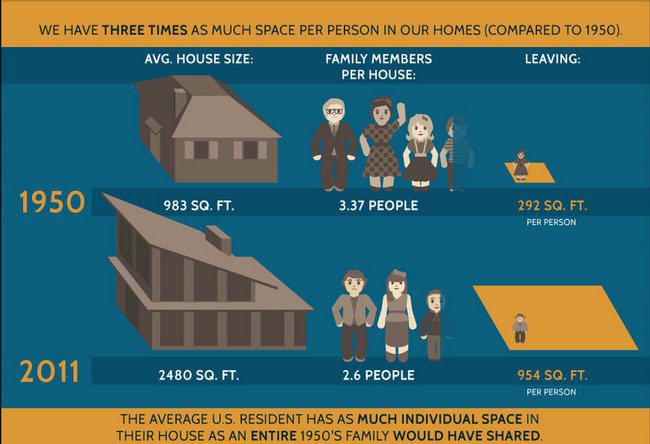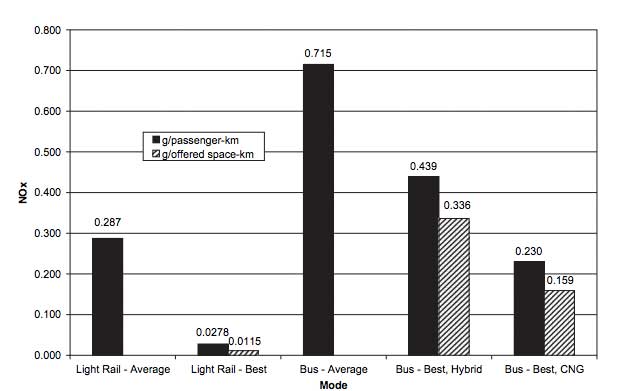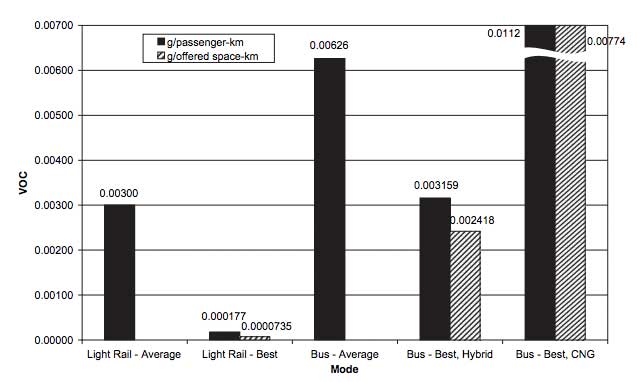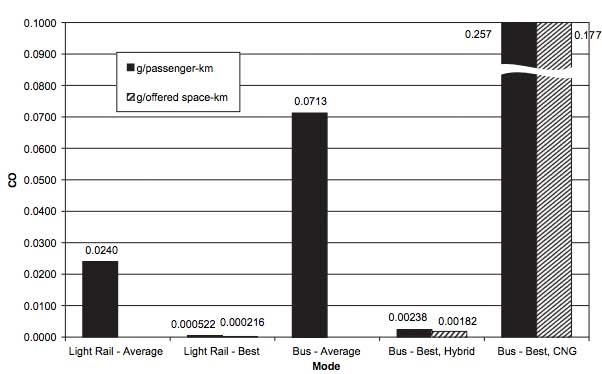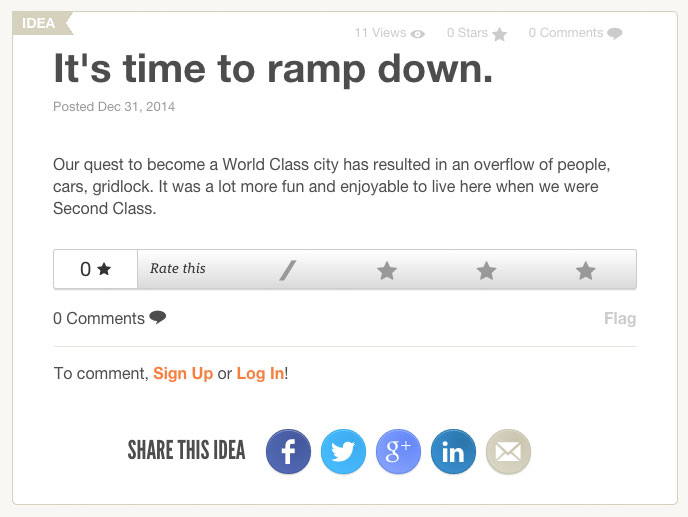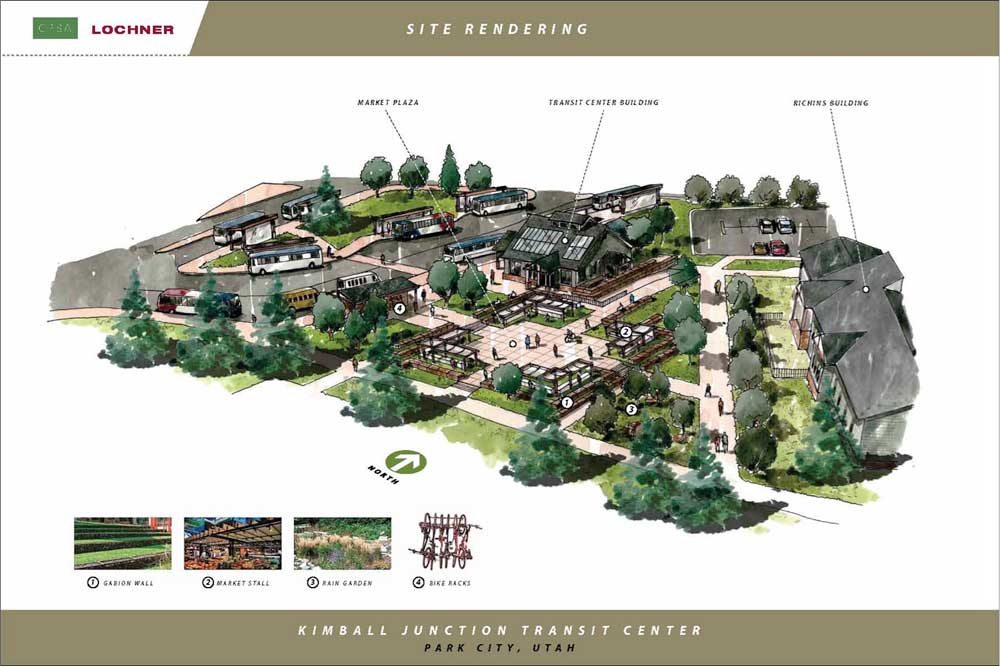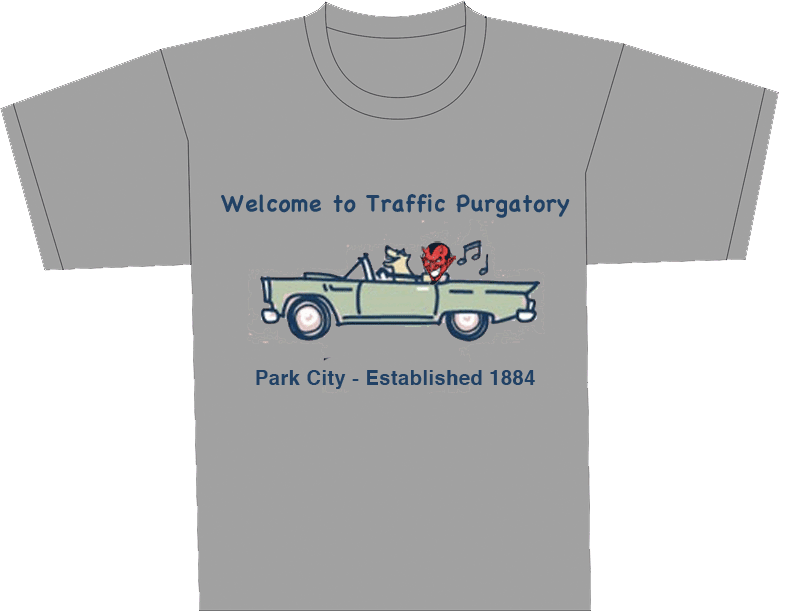Should We Try to Limit House Sizes Around Park City
Recently there has been quite the uproar over transportation and now there is an attempt to “solve the problem” of people driving in their cars. Should we make parking so expensive that no one will want to drive? Should we limit the cars that can come into Park City? Should we get rid of parking and make it painful to drive anywhere? To borrow from an awful 1980’s Sylvester Stallone movie, it’s seems “Driving is a Disease and the Government is the cure.”
If we are willing to make arbitrary rules, how about one on house size for new homes? Smaller homes could lead to less people. Less people could lead to less cars. Less cars could lead to less traffic? There are also ancillary benefits like less electricity required and less natural gas.
Here is a graphic on the average house size nationwide:
What do you think the average home size is in the Snyderville Basin? 3,000 sq ft? 4,000 sq ft? More?
Are we serious with a question like this? No, not really. It seems to be a serious infringement on rights. That said, are the ideas that are being thrown around for cars any less of an infringement?
Jeremy Ranch Mountain Lion
If you live around Jeremy Ranch, we are getting reports from residents that a mountain lion seems to be hanging around the hill across the LDS church. So, if you have dogs or small children you may want to take that into account.
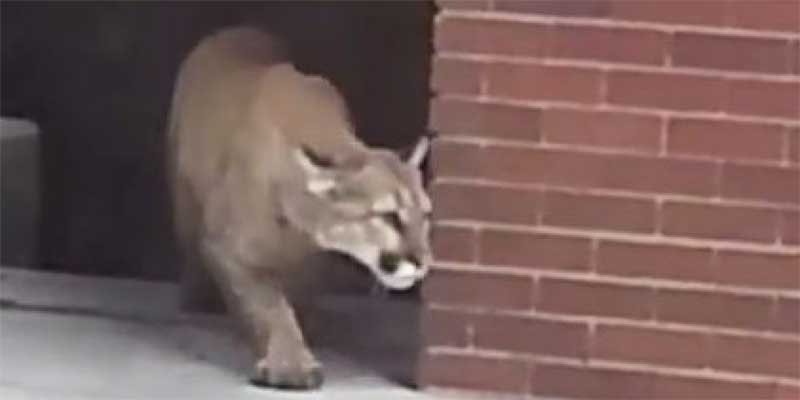
Bus Versus Light Rail… Which Creates More Polution?
This morning on KPCW, Summit County Council member Claudia McMullin spoke about the Health Department wanting wood fireplaces banned in new construction as well as her preference for light rail (over buses) at a high level.
This got us wondering about the pollution impacts of buses versus light rail. Fortunately for us, Maryland’s Action Committee for Transit, published a study on the subject. The study’s results show, “that although advances in diesel technology have radically improved bus emissions, LRT (Light Rail) systems still produce less regional or urban emissions in the three categories considered than BRT (Bus Rapid Transit) systems. This is true whenever equal technology levels are compared and even when superior BRT technology is compared with standard LRT systems for some pollutants. In addition, emissions of both modes have improved over time. These results are only applicable to the effects of these technologies on regional air quality and not on street-level air quality or emissions on a national or global scale.”
NOx Comparison:
VOC Comparison:
If this topic interests you, you may want to check out the entire results:
http://www.actfortransit.org/docs/2008JulLRTvsBRTemmissions.pdf
County Considering Expanding Allowed Uses and Square Footage at Old Meacham Jeep Site
On February 25th, the Summit County Council will hold a public hearing to discuss increasing the types of uses and the amount of square footage that is available at the old Meacham Jeep site. Meacham Jeep’s site is now occupied by Professional Care Auto Works and sits on the east edge of the Burt Brothers facility.
Since this is a public hearing, the county would like to hear from you if you have an opinion. Some reasons you may be FOR this proposal include:
- This will allow potentially more types of businesses, that could be more successful. This would provide more tax dollars to our community.
- Since this is a commercial area, many people feel the owner should be able to do whatever he wants with the property.
- The area has changed dramatically since the Jeep Dealership was there. You may think that the old rules should no longer apply.
Some reasons you may be AGAINST this would be:
- If this building is a successful, there will be more traffic on Rasmussen Rd … which is two lanes and isn’t equipped to handle more traffic.
- There is a daycare in the Burt Brothers area already. Expanding traffic could endanger children.
- More traffic along Rasmussen, so close to the new trail that was built along the road, could endanger trail users.
One interesting thing we found is a street view of this area from 2007. It’s amazing how much it has already changed (and probably for the better). You can click around the image below and see what the area used to look like.
If you have a strong feeling either way about this area, you should let the Summit County Council know. We’ll provide an update when we hear more about proposed details.
We are hearing this more and more…
Park City has a website called “Let’s Talk Park City.” People can go there and list ideas they have for the town. This idea was listed a couple of months ago but it sums up a view that we’re hearing a lot recently…
When They Build It Will You Come?
On Wednesday, the Summit County Council will be reviewing a design for a bus transit center that occupies 3 acres behind the Richins Library building in Kimball Junction. The project, in development since 2010, aims to realign county bus routes for better efficiency, provide a “circulator” service around Kimball Junction, and provide expanded opportunities for regional transit services.
The proposed transit center has 10 spaces for buses, 2 spaces for vans, 20 parking spaces for cars, a 2500 sq foot customer service building (restrooms, info booth, etc.), and bike storage. This what the proposed facility will look like:
It’s a nice looking building and seems to complement the Richin’s Building nicely. It also appears to be a done deal. According to a Summit County presentation on the topic, “the Design [was] Reviewed and Approved by PC Transit. PC Transit Applied for a $1.7M Grant from FTA and an award was made in 2014. County Council Approved $500K for construction. PC Transit also rearranged FTA Monies for Design and Summit County Received a check for $95,000.”
Yet, is this just another case where we build something and spend taxpayer money with the hope that it will somehow do something? We’re not sure, but we do believe it’s another case of where hopes and wishes have trumped the real world. Here are our questions and concerns:
- From county documents, it sounds like they don’t want many people driving in and parking and using this as a park and ride (only 20 park and ride spaces). If they did, it would only contribute to additional traffic on 224. So, how will it be used? Most likely as a transfer station. Isn’t that sort of what the area by Newpark Hotel already does?
- Creating a base for buses that would circle around Kimball Junction is another stated goal. Again, that sounds good but what population will use this? We envision the idea is that people will ride around Kimball Village shopping and dining. However, what does that really look like? People would need to ride a bus from wherever they are to the new transit station. They would then get on the circulator bus. They would stop at Smith’s and do their shopping. They would have 3 or 4 bags of groceries. They would ride to PetCo and pick up their 30 pounds of dog food. They may stop off for lunch after that at Zuppas. They may then hit Best Buy to pick up that memory stick for their camera they’ve been needing. Really?…is that probable or even possible? We’ve been trying to figure out a scenario, with the current shops where someone may “circulate” around Kimball Junction. Maybe someone drops off their broken Mac at Simply Mac and heads to Maxwell’s for a beer? OK, that works. Perhaps they hit Best Buy, buy a salad at Whole Foods, and then go to the Salon? Yeah. Maybe we are missing something but the blend of shops and uses just doesn’t seem to lend itself to a circulator (at last right now and for the foreseeable future).
- Another stated goal is to have more efficient routes. We actually like this idea. If they were able to offer direct buses to Canyons, PCMR, and Deer Valley,thatmay be a great idea. However, a few obstacles would haveto be overcome:
- They don’t want us to drive and park there, so the average joe would need to catch a bus there. So, all those routes would also have to be optimized and made more frequent as well.
- It would have to be very frequent. Most people wouldn’t wait more than 15 minutes at the new transit station for the bus. So, the buses would have to run often. That’s more buses and more cost. It is also a gamble that by making it more frequent that will be enough to entice people to use the service.
- There couldn’t be more transfers for riders, because that takes time and turns people off. So, the transfer at this station would likely need to replace other transfers. It would have to be a hub and spoke system to the most popular destinations.
- It appears buses would exit both on to Landmark Drive and Ute Boulevard. During busy times of the day, Ute Blvd gets backed up by the Richens Library already. How much additional backup congestion will this add?
- Shouldn’t this be built with some room for expansion? It seems that to draw people, you need to have services that make people want to come. Perhaps in this case, there could be lockers for people to store their ski gear and places to dress for skiing. Maybe e-bikes could be rented in the summer (it’s pretty adjacent to the paved trail system). A coffee shop also wouldn’t be a bad idea. We believe there needs to be enough room to accommodate some of these things that may draw a few more people.
Overall, we can see why there were great hopes for this in 2010 and maybe it’s not a bad idea now. In 5 years, if Boyer Tech Park has been built, Kimball Junction has filled in with a myriad of different establishments, and people have changed their mindset to use the bus, then this will look very smart. However, if 2020 doesn’t look much different than 2015, then this will likely be just another hope-filled excursion.
Turns Out This Winter IS a Glimpse at the Future
We’ve been reading Utah University Atmospheric Science Professor Jim Steenburgh’s blog quite a bit recently to understand current weather trends. According to the professor, this year’s December and January averaged 5.7ºF above normal. If we look at long term expectations, with moderate to high emission continuing… this is what our part of the Wasatch would expect in 2060.
However, Steenburgh states that the western part of our country experiences vast fluctuations in weather. So, over the next few decades we will likely continue to vacillate between great winters and those not as good. So, in the short-term we appear to fine for now.
Professor Steenburgh then states, “Let’s suppose these estimates of warming are overdone. Maybe we only warm 2ºF by 2060. That’s fine, but the odds and frequency of years like this [years] are likely to increase even under that scenario.”
The takeaway is that we likely need to be planning for this future. Since we are not the smartest guys in the room, we don’t know exactly what that means but it does mean envisioning weather patterns trending toward what we have seen this year. Perhaps that means planning for less water and less population. Perhaps that means finding a place near Big Sky in Montana, since that frigid tundra should be quite nice in 2060.
Whatever it means specifically, it generally means that the next 30 years won’t be like the last 30 years and we shouldn’t be so short sighted to extrapolate the future based on the recent past. Many of the obligations we sign ourselves up for are 20-30 years (think bond offerings for recreation, schools, trails, etc.). In 20-30 years, things could be quite different.
You Don’t Get Cheaper Than Free
A reader just contacted us and made an interesting comment:
“I keep hearing buses are the answer. Usually when something is free everyone wants a piece. Look at Costco samples. If people don’t take advantage of free, there’s something wrong with the product. What’s wrong with the buses. You don’t get cheaper than free.”
Transportation Decisions Need to Be Grounded in Reality
Over the weekend we had a discussion with a friend, that was sparked by Friday’s transportation discussion between Park City Mayor Jack Thomas and KPCW’s Leslie Thatcher. That conversation indicated that buses were likely the only feasible “solution” to our areas’s transportation problems.
We asked our friend who lives in Jeremy Ranch and works in Prospector about busing. Specifically:
- How long does it take you to drive into work each day?
- How long would you be willing to wait for a bus, if you were to ride it to work?
- How many bus transfers would you be willing to make?
- How long from door to door are you wiling to tolerate?
- How far will you walk from bus stop to work?
You see, we hear all the time that buses are the solution. The county is even upping the ante by looking at putting a transit station in Kimball Junction. Yet, we read articles like “Buses are for Other People” and we try to understand the disconnect. It seems each time our government officials talk about buses, they are speaking at the 30,000 foot level.
So, we decided to ask someone on the ground that doesn’t bus today, and who has looked at it, what it would take to get her on a bus. The responses? Right now it takes about 20 minutes to drive in to get to work by 8:30. She’d be willing to wait 15 minutes for a bus. She wouldn’t do more than one transfer. She’d be willing for the entire run to take about 40 minutes. She’d be willing to walk somewhere between 5 and 10 minutes to get to work. She also pointed out that she lives about a mile from the bus stop in Jeremy Ranch, so she would have to drive and park there (unless she wanted to walk another 20 minutes).
Using Google Transit we then looked up what her commute would look like today:
- She’d need to leave her residence by about 7:20 in order to get to the Jeremy Ranch Park and Ride.
- Her bus would arrive at 7:30 AM (buses come every 30 minutes).
- It’s takes 15 minutes and 12 stops to get to Kimball Junction. So, she would get there by 7:45AM, according to bus schedules.
- The bus for Park City leaves at 7:45. So, as long as timing is perfect, she’d make that. Otherwise, she would wait (and be very late for work).
- She would arrive at Hotel Park City at 7:53, after 15 stops.
- She would the transfer to another bus that would get her to the Park City Marriott by 8:09.
You contrast that with hopping in the car at about 8AM and going door to door. That said, this fits many of the criteria she laid out, but would an average person choose this path? We wouldn’t and this is actually one of the best routes we’ve seen. Leaving work and going to her residence requires even more time and more walking, as well.
We think that’s why buses have a hard time. It’s complicated for people to get their heads around… and no, an iPhone app that helps with scheduling, is not an answer.
Now, if you make a mandatory minimum$30 parking charge, you may move people to embrace busing. $30 to park at Smith’s to get your groceries … $30 to park at Cole Sports to buy a present … $30 to park at City Hall to go to work … . Then you might see people riding the bus.
While we wait for those “incentives” to be put in place, we’ll be contemplating the real world. Buses sound good, but in reality its a non-starter, unless behaviors are forcibly changed through draconian measures. Those draconian measures, when implemented, would impact the low and middle class more. You would have to charge enough to convince the wealthy to change behavior, unfortunately that would be a death blow to Park City’s working population. It would be completely regressive.
So, in our minds, buses are as likely to succeed as a $65 million per mile light rail… just for different reasons. We need better ideas, not just easy ones.
Exchange Between KPCW’s Leslie Thatcher and Mayor Jack Thomas Highlights Transportation Hurdles
This morning, KPCW’s Leslie Thatcher asked Park City Mayor Jack Thomas about transportation. Their exchange of questions and answers highlights the level of challenge we as a community face in order to start tackling the transportation issue:
Ms Thatcher: Since we only have two lane highways… we talk about “let’s get people on buses” but until it gets too expensive to park or there is no where to park, people are going to take their own cars. It’s almost like you have to pinch them and then they’ll change what they are doing.
Mr Thomas: This is an unbelievably complicated task. The amount of traffic that comes and goes is not just one element. It’s a combination of different fibers of people. Construction traffic… People that live here and work in SLC … etc. Its complex. Kent Cashel [Park City’s Transportation Guy] has been looking at those issues and is trying to understand the breakdown of the traffic itself. Then how do we begin to attack each issue. Is there a way to modify behavior to work differently?
Ms Thatcher: Also some talk about Light Rail. The price tag that was thrown out was $66 million per mile. So, that’s not going to happen. So, should we just move on?
Mr Thomas: I think we understand that light rail development increases development. Light rail increases and concentrates development. $66 million dollar per mile is for flat ground on grade. That’s not digging through tunnels. So, it’s kind of a price tag that an urban community can deal with but its hard for a community like our with so little population. So, we are looking at bus rapid transit. There are two types. There is one called Bus Light which would have buses about the size we have now that would work on the roads we have now … more of them and more stops. That’s about a half million dollars per mile. Or there is Bus Rapid Transit Dedicated Line which is more like $4 million dollars per mile. There are other communities that have done something like that. For instance the RFTA project between Glenwood Springs and Aspen is a new system that has a geography and similar structure and size to what we have here and that seems to be working.
Ms Thatcher: I thought that the word was that they are not using it. It’s a “great system” but…
Mr Thomas: That’s true. That’s the criticism. I think most transportation systems, when they begin, are pretty lightly used. We are exploring all the possibilities. We are not interested in increasing the widths of the highways. We don’t see building more road, bigger roads, is the better way to the solution of the future. Maybe managing better and getting more systematic about the traffic lights [is the way to go].
OK, Park Rag here with our thoughts. This was a great question and answer session. It highlights most of the issues. Unfortunately, we are starting to feel like we are in Transportation Purgatory. We will forever be sentenced to traffic nightmares because of the sins of our past. Sorry, but we don’t have great hope that buses and traffic lights are going to fix things.
Can someone please come up with something original. We heard a guy talking about Zeppelin’s last week. Crazy… for sure. More likely to be successful than tinkering with traffic lights? Probably.
While we wait, we’ve decided to be productive and work on some t-shirt designs.

